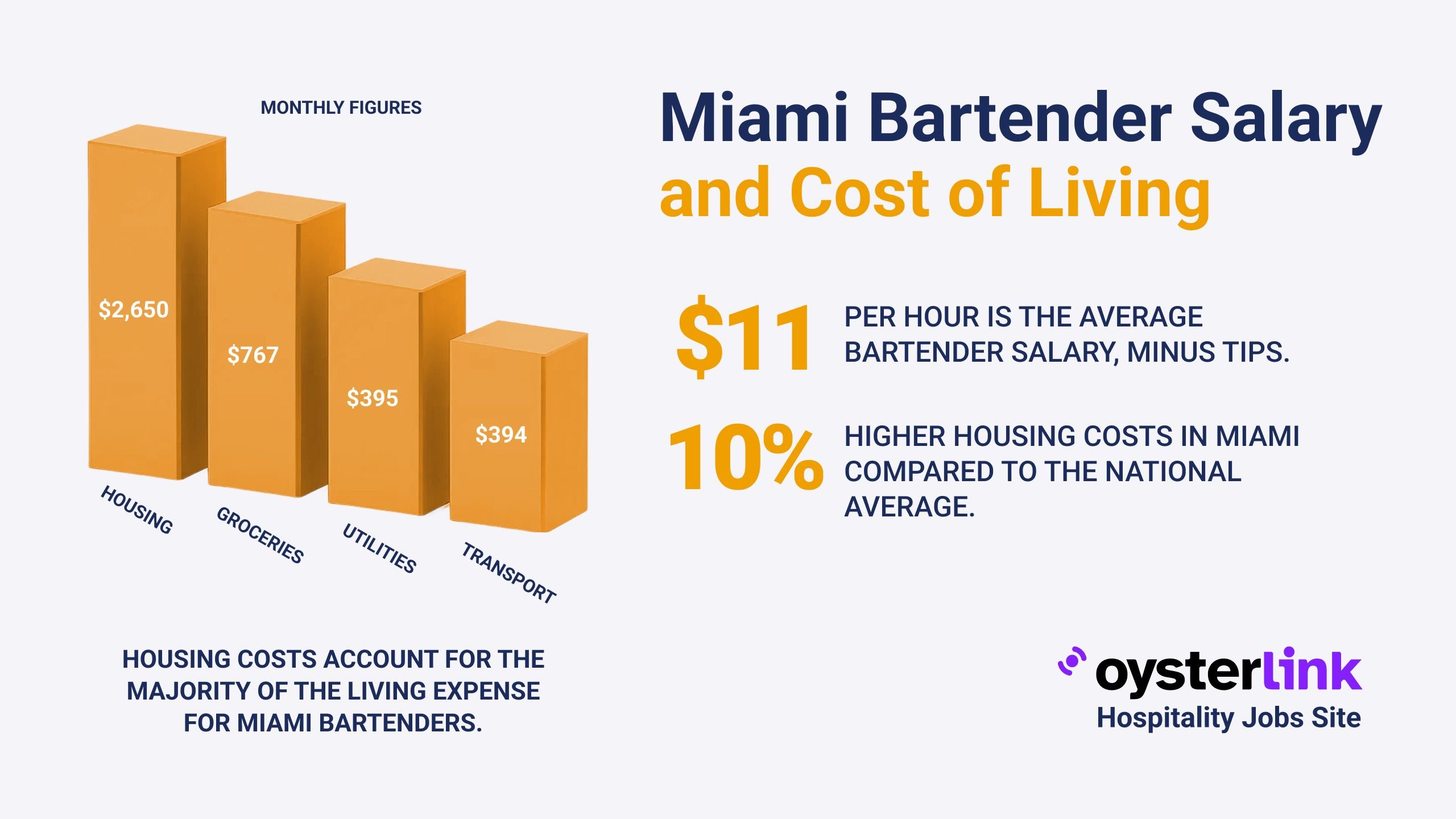Miami Living Wage vs Waitress Salary: Key Takeaways
- The living wage for a single adult in Miami is approximately $24.77 per hour or $51,528 annually.
- Average waitress salaries in Miami range between roughly $21,600 to $50,000 annually depending on data sources and tip inclusion.
- Florida’s 2025 minimum wage is $14.00/hour for non-tipped workers and $10.98/hour for tipped workers, below the Miami living wage.
- Miami’s cost of living is significantly higher than the national average, especially in housing and groceries, intensifying financial challenges for waitresses.
Miami waitresses face a notable earnings gap compared to the living wage needed to cover basic expenses in the city.
Understanding salary data versus cost-of-living helps reveal challenges and potential solutions for service workers.
1. Understanding the Miami Living Wage
The living wage calculation represents the hourly income required for a single adult in Miami to cover essential living costs, including housing, food, healthcare, and transportation.
According to the Massachusetts Institute of Technology’s Living Wage Calculator, this figure is $24.77 per hour in 2025, equating to an annual income of about $51,528.
This standard reflects a baseline for financial security without reliance on assistance or excessive hardship. The high cost of living in Miami, with housing costs alone 47% above the national average, heavily influences this wage requirement.
2. Miami Waitress Salaries in Context
Comparing this living wage to waitress salaries in Miami reveals a wide disparity.
Various sources report different averages:
- Salary.com lists an average annual salary of $21,601, ranging from $18,901 to $24,501.
- Glassdoor shows a significantly higher average of $50,277 per year, with salaries between $37,708 and $68,854.
- Comparably reports an average salary of $44,683 for servers/waitresses.
These discrepancies are due in part to whether tips are included, types of establishments surveyed, full-time versus part-time distinctions, and data collection methodologies.
Even on the higher end, many earnings hover around or just below the living wage, indicating many waitresses might struggle to meet all basic living expenses comfortably.
For employers, understanding these salary dynamics can aid in better hiring and retention strategies in the competitive hospitality market. Learn how to hire restaurant staff effectively to address these challenges.
3. Minimum Wage and Cost of Living Challenges for Miami Waitresses
Florida’s minimum wage in 2025 is set at $14.00 per hour for non-tipped employees and $10.98 per hour for tipped employees like waitresses.
Although these are improvements over previous years, they remain well below the $24.77 living wage needed in Miami, limiting financial security for many service workers.
Compounding this issue, Miami’s overall cost of living is substantially higher than the national average. Key cost increases include:
- Housing: 47% higher
- Groceries: 20% higher
- Transportation: 8% higher
- Utilities: 6% higher
- Healthcare: 5% lower
The elevated housing and grocery costs especially impact waitresses who often work irregular hours and depend heavily on tips.
Employers can find useful guidance on managing pay and benefits for tipped employees by exploring minimum wage regulations for servers.
4. Bridging the Gap Between Miami Living Wage and Waitress Salary
Addressing this earnings and living cost mismatch requires coordinated efforts targeting wage policies, workplace practices, and support systems.
Advocating for Wage Increases and Fair Tipping
Raising Miami’s minimum wage closer to the actual living wage would directly alleviate financial pressure on waitresses.
Additionally, ensuring tip transparency and fair distribution helps workers maximize their total income.
Restaurant owners can improve wage fairness and operations by reviewing top tips for hiring servers and waiters.
Supporting Affordable Housing and Financial Education
Developing affordable housing options targeted at low and moderate-income workers is crucial to reduce one of the largest living cost burdens.
Providing financial literacy programs can assist waitresses in budgeting effectively and planning for financial stability despite income uncertainty.
Supporting workforce financial health can also be enhanced by providing educational resources like writing a waitress cover letter guides for career advancement.
5. Additional Considerations and Policy Implications
Employers and policymakers should consider the variability in reported waitress salaries and local cost pressures when crafting employment standards and support programs.
Encouraging employers to offer benefits like healthcare and stable scheduling can mitigate income volatility common in tipped service jobs.
Public awareness initiatives emphasizing the true cost of living and earning challenges faced by service workers can help build support for necessary reforms.
6. Useful Government Resources for Miami Workers and Employers
- U.S. Department of Labor - Fair Labor Standards Act (FLSA)
- Florida Department of Economic Opportunity
- City of Miami Official Website
Miami Living Wage vs Waitress Salary: Conclusion
The financial gap between Miami’s living wage and average waitress earnings underscores the vulnerability of service industry workers.
Despite recent minimum wage increases, many waitresses may still find it challenging to cover essential living costs in the city’s high-expense environment.
Bridging this divide demands wage policy reforms, better tip practices, affordable housing efforts, and financial education to foster economic stability for Miami’s workforce.
For more insights on waitress career development, visit the waitress career overview and explore the waitress job description to understand the role better.


.png)

.png)
.jpg)